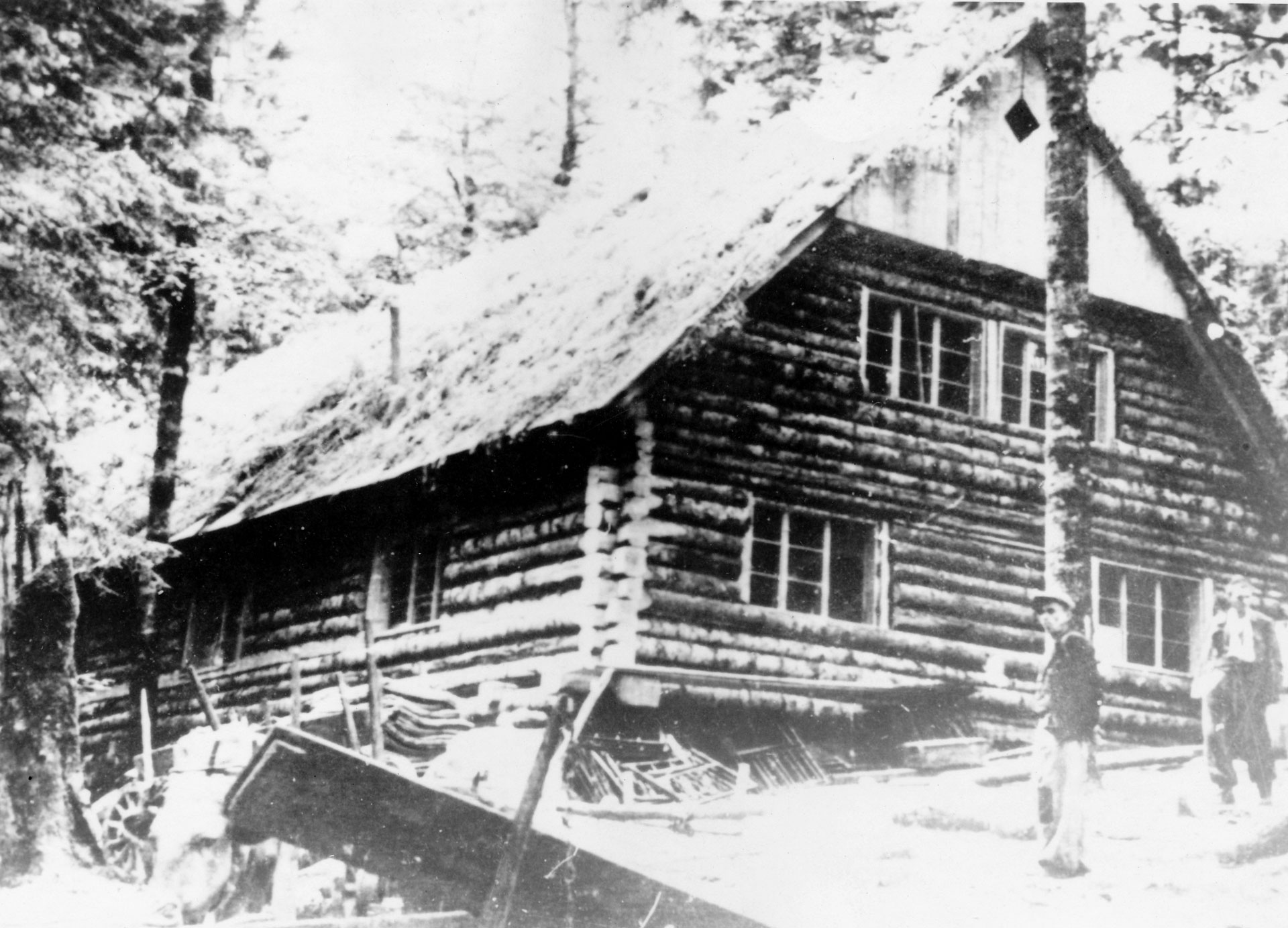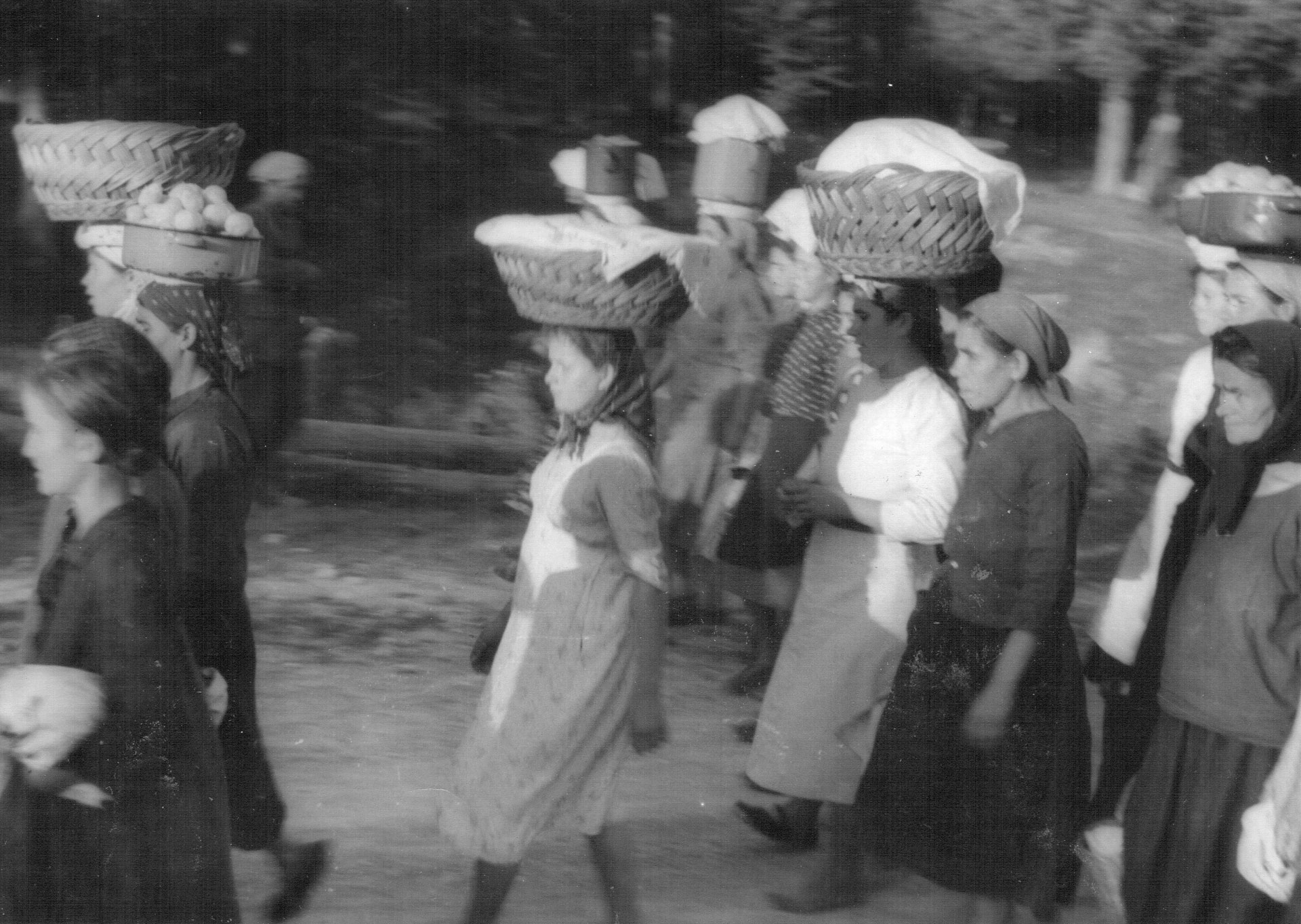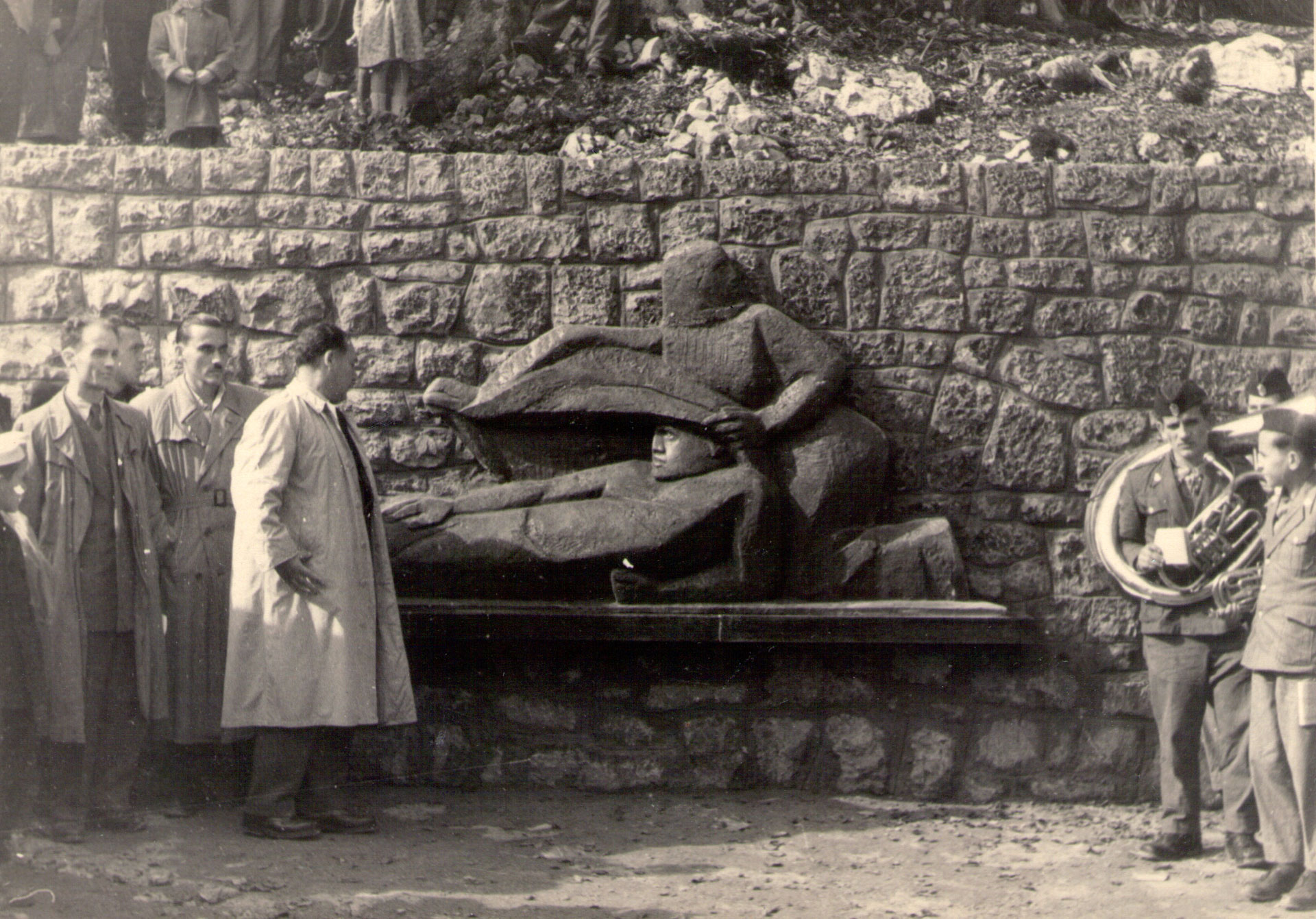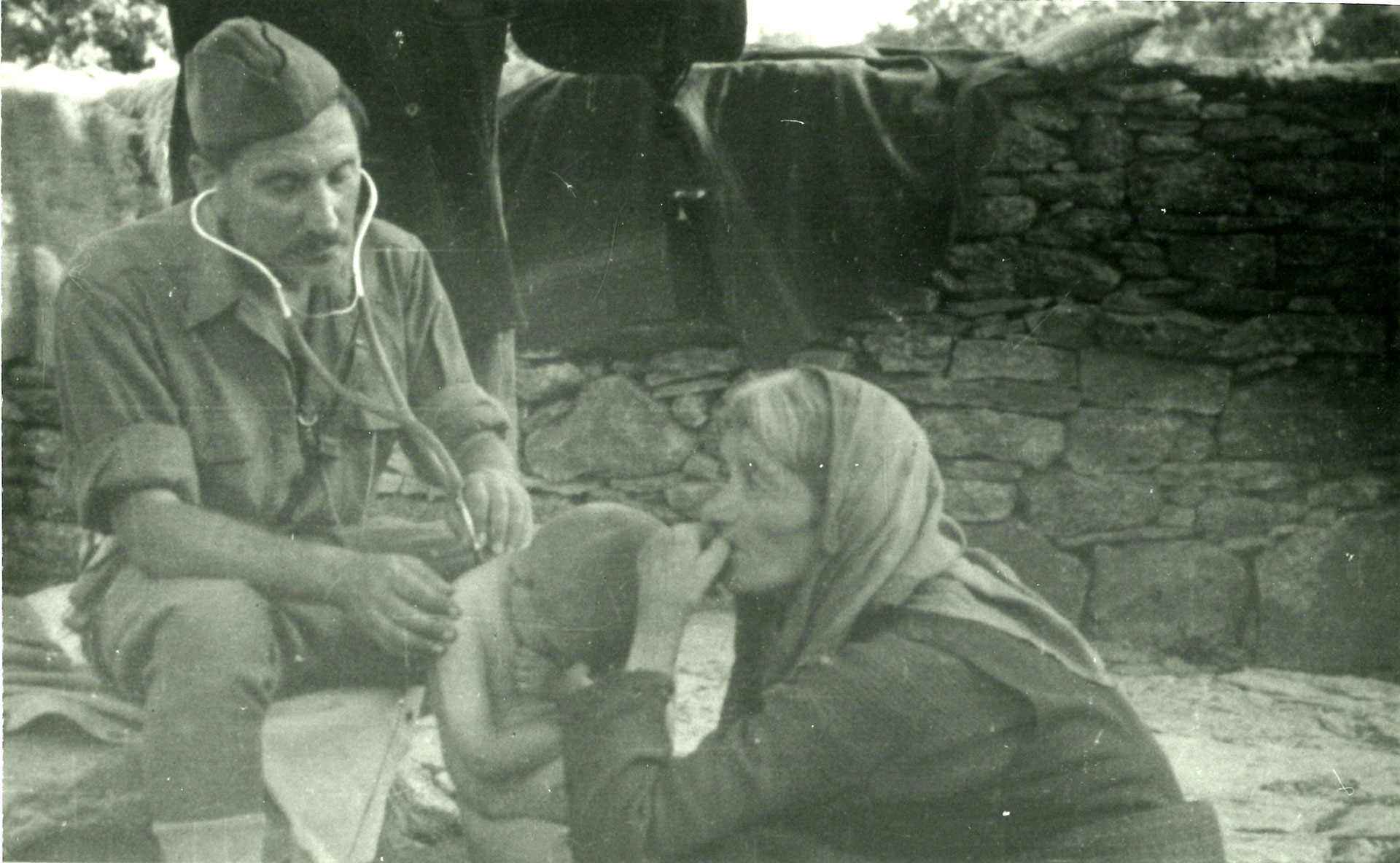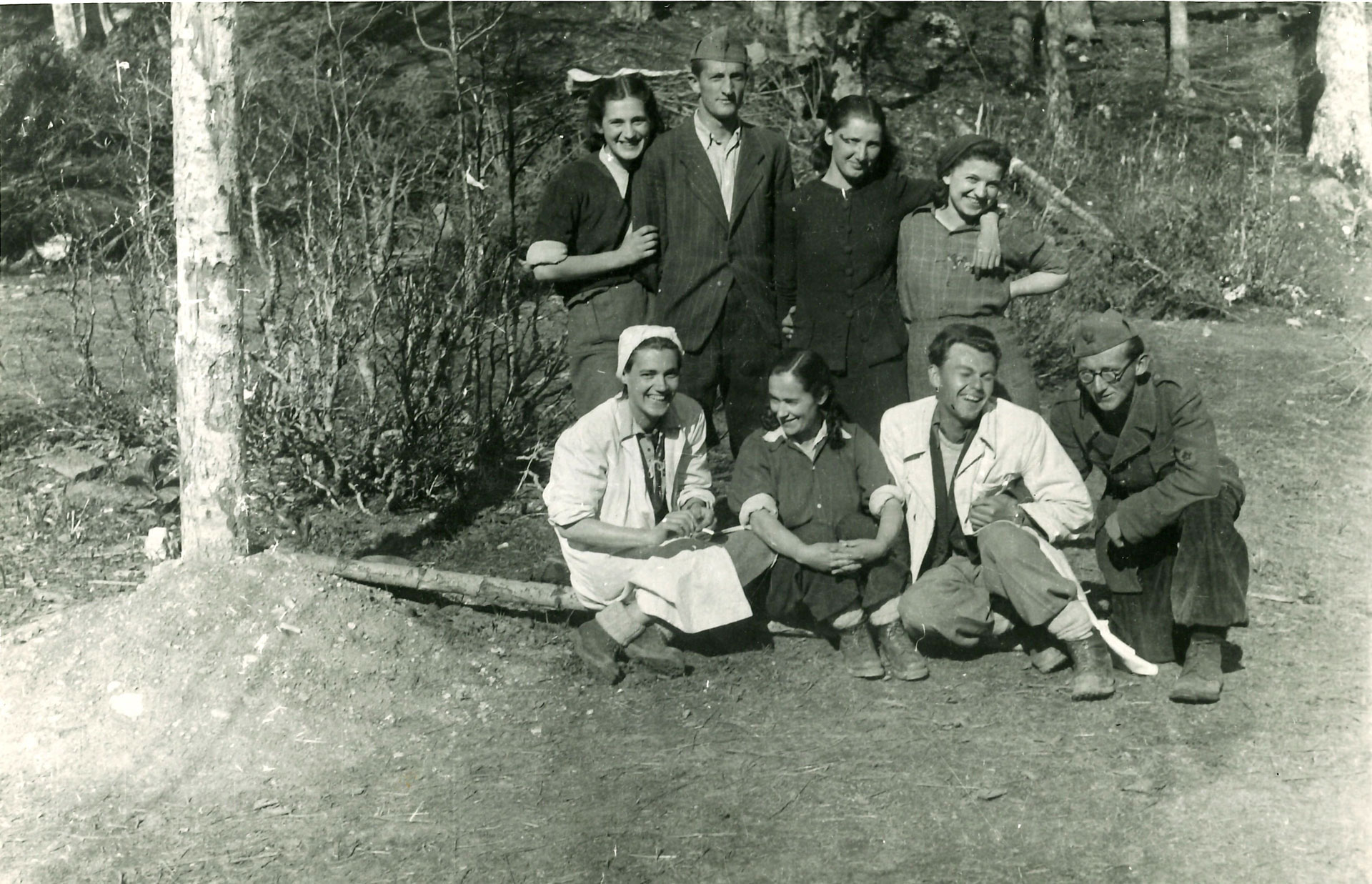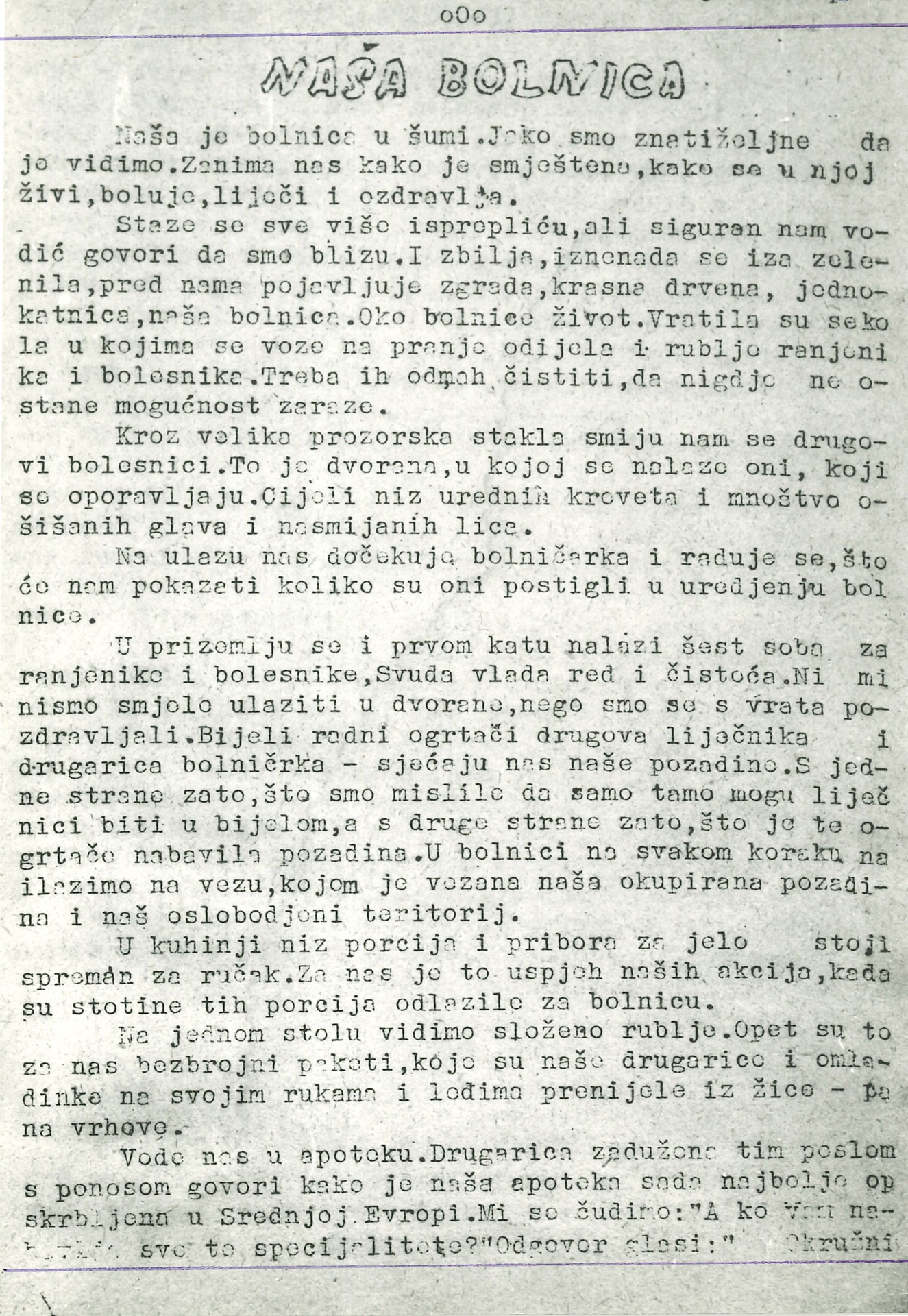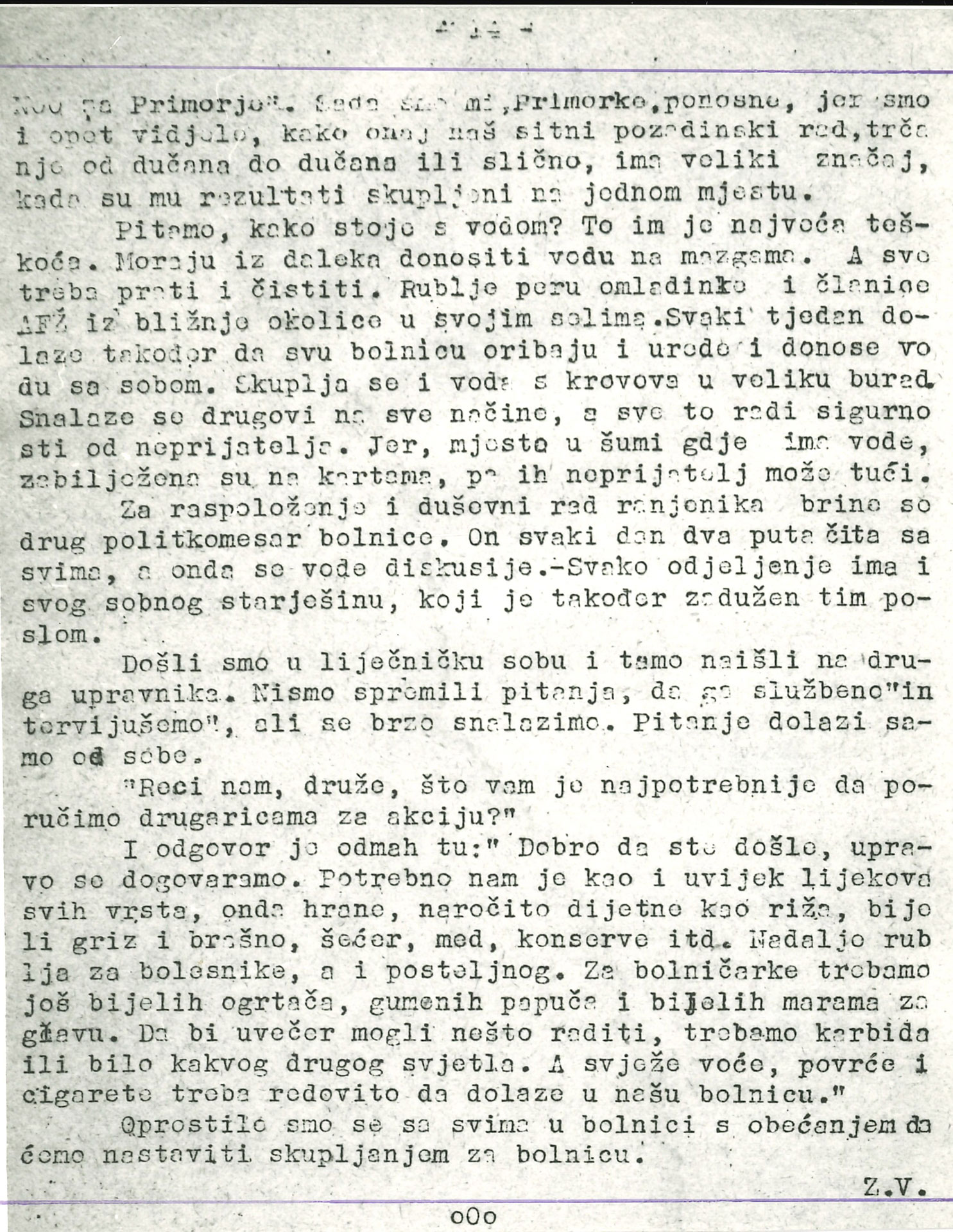“Our Hospital is in the forest”: Radical Healthcare as Resistance
“There are six rooms for the wounded and sick on the ground and first floor. Everything is tidy and clean. We were not allowed to enter the rooms, only to greet them from the door. The white scrubs of comrade doctors and nurses remind us of the occupied areas. On the one hand, it’s because we thought that only there, doctors could wear white scrubs, and on the other, because these scrubs were brought here with the help of the [partisan] rear [system]. On each step of the hospital, we encounter a bond between our occupied positions and our liberated territory.”
In typical conspiratorial fashion, the description of one of the Partisan hospitals in Primorje and Gorski Kotar contains no information on locations or people. Thanks to Jela Jančić-Starc, who in the 1960s devoted herself to the historicisation of this hospital near Drežnica, we also know the author of this record: Returning from the first Croatian Conference of AFŽ, held in Otočac on June 12, 1943, Veda Zagorac visited the forest hospital with a delegation of women from Primorje, who regularly supplied it with food, water, medicines, and other materials.
An impressive network of mobile and stationary hospital units operated throughout Yugoslavia during WW2. With the formation of the first partisan detachments, numerous mobile hospitals and dispensaries were formed in the liberated territories. Hospitals were located in existing facilities in liberated settlements or newly built facilities and larger complexes (wooden barracks) in secret locations in isolated mountain areas. They were thoroughly camouflaged and protected from enemy attacks. The most famous mobile hospital was the Central Hospital of the NOVJ Supreme Headquarters, which had around 3,500-4,000 wounded and sick people on the move. Because of it, in February 1943, the so-called battle for the wounded was fought in the Neretva valley. Since 1944, military and refugee hospitals have been established also outside Yugoslavia, in Italy, Malta, and Egypt, with the Allied forces.
The organisation of military health was one of the major challenges of partisan warfare, but it was also a measure of the success of the entire antifascist movement. In addition to facilitating the recovery of combatants, hospitals provided healthcare to civilians in areas without available public healthcare. However, the supply and safety of hospitals depended directly on the cooperation and support of the local population and health workers from larger cities. Hospitals were mostly run and supplied by women, who often managed them as well. Among the medical staff were numerous Jews and members of other persecuted minorities. A total of 3,719 Partisan nurses died in Yugoslavia, mostly from Croatia (33%) and Bosnia and Herzegovina (26%). More than half of the female nurses who died were under 20 years of age, and 85% were from rural areas, had low education or were illiterate.
Sanja Horvatinčić


